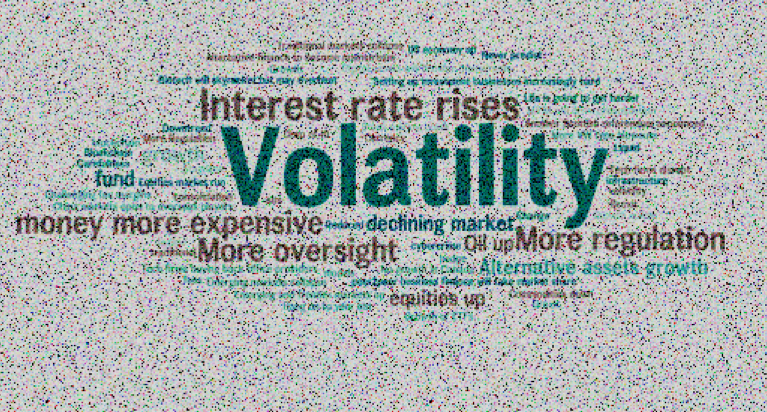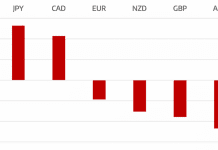Welcome to “Financial Insights,” a series that guides investors through the intricate paths of the investment landscape. In the first part of this series, we dove into the complex world of bonds and debt investments. In this part, we complete the guide to bonds and debts, taking a closer look at bond options and additional examples of how investors can take full advantage of bonds and debt investments.
Bond and Debt Derivative Investments: An Overview
To begin with, let’s establish a foundation. Bond and debt derivative investments are financial instruments that derive their value from an underlying bond or debt security. They provide investors with alternative ways to gain exposure to fixed income markets or hedge against potential risks. These derivatives come in different forms, each with its unique characteristics and strategies:
Delving into the world of bond futures
A bond future is a standardised contract that allows investors to buy or sell a specific bond at a predetermined price and date in the future. These futures provide an efficient way to speculate on interest rate movements or hedge against potential interest rate risk. Bond futures are commonly used by institutional investors and traders to manage their bond portfolios.
Let’s say Investor A is a large institutional investor with a diverse portfolio of government bonds. Concerned about potential interest rate fluctuations, Investor A decides to hedge against interest rate risk using bond futures. They enter into a bond future contract for a specific government bond with a predetermined price and date, say three months from the current date, at $1,000.
If Investor A expects interest rates to rise, they sell the bond’s future contract to lock in the current bond price, protecting their portfolio from potential losses. Conversely, if they anticipate interest rates to fall, they buy the bond’s future contract to profit from the expected increase in its value. By utilising bond futures, Investor A strategically manages their bond portfolio, ensuring greater stability and control in the face of changing interest rates.
Moving on, let’s explore options on bonds.
Bond options provide investors with the right, but not the obligation, to buy (call option) or sell (put option) a specific bond at a predetermined price within a specified period. These options offer flexibility and can be used to hedge against adverse price movements or to speculate on potential bond price changes. Bond options are popular among sophisticated investors looking for strategic portfolio management tools.
Tom, a seasoned financial expert, holds a portfolio of corporate bonds, which he believes might be subject to price fluctuations due to uncertain market conditions. To protect his investments, Tom decides to utilise bond options. He purchases call options on some of their most significant holdings, giving him the right, but not the obligation, to buy these bonds at a predetermined price within a specific period. This call option allows Tom to safeguard against any potential price increases.
On the other hand, he also purchased put options on other bonds in his portfolio, granting him the right to sell these bonds at a predetermined price during the specified period. This put option provides protection against any potential price declines. By employing bond options, Tom ensures flexibility in managing his bond portfolio and effectively hedges against adverse price movements, thus enhancing his strategic portfolio management approach.
Another important derivative instrument is the credit default swap (CDS). A CDS is essentially an insurance contract on a bond or debt security. In this arrangement, the buyer of the CDS pays a premium to the seller, who agrees to compensate the buyer if the underlying bond or debt security defaults. Credit default swaps provide investors with a way to hedge against credit risk or speculate on the creditworthiness of specific issuers.
Let’s move on to another derivative instrument called interest rate swaps. Interest rate swaps involve the exchange of fixed and floating interest rate payments between two parties. These swaps allow investors to manage interest rate exposure or adjust their cash flow structure. Market participants, such as corporations or financial institutions, use interest rate swaps to match their liabilities with assets or speculate on interest rate movements.
Lastly, we have collateralized debt obligations (CDOs). CDOs are structured financial products that pool together various debt instruments, such as bonds, mortgages, or loans. These pools are then divided into different tranches with varying levels of risk and return. CDOs gained notoriety during the 2008 financial crisis, as some were backed by risky subprime mortgages. Proper understanding and due diligence are crucial when considering CDO investments.
A Complete Guide
And there you have it—the world of bond and debt derivative investments in a nutshell. From bond futures to options, credit default swaps to interest rate swaps, and collateralised debt obligations, these derivatives provide investors with alternative strategies to navigate the bond and debt markets.
That concludes today’s “Financial Insights.” I hope you found our exploration of bond and debt derivative investments insightful and informative. Remember, thorough research and understanding of these complex instruments are paramount when incorporating them into your investment strategy.
This article is part of the series “Financial Insights”, where Hilton Supra, VP of ztudium and openbusinesscouncil, shares his insights on different investment strategies.
Disclaimer
The information provided herein is for informational purposes only and should not be construed as financial or investment advice. It is not intended as an inducement or recommendation to engage in any trading activities or investment decisions in the United Kingdom (UK) or elsewhere. Trading in financial markets involves significant risks, and individuals should exercise caution and seek professional advice before making any trading or investment decisions. The content provided does not consider your personal circumstances, financial situation, or investment objectives. Therefore, you should independently evaluate the information and consult with appropriate professionals to determine its suitability for your specific needs. The author and the publisher disclaim any liability for any direct, indirect, or consequential loss or damage incurred by relying on the information provided.

Hilton Supra is banking and financial management expert with over 30 years of experience in quantitative asset management, capital markets, hedge funds, and private equity. He has always been on the leading edge of innovation in finance, investment, and technology, especially the application of blockchain, AI, Web 3.0, and fintech 360.
Hilton is the co-founder of Zudium Group, a builder of 4IR platforms (using blockchain, AI and IoT data analytics), and its subsiduary companies: techabc limited (citiesabc.com) Open Business Platform Limited (openbusinessescouncil.org), Fashiondna Limited (fashionabc.org).
As a host of the citiesabc YouTube Podcast Series, Hilton has interviewed eminent guests and experts from the fields of innovation, technology, finance, and fashion, including Felix Xu, CEO of ARPA and Bella Protocol, Labid Aziz, CEO of People of Culture Studios, Jesse Brown, CEO of Himalaya Exchange, to name a few. The channel was awarded Silver Badge from Youtube and is amongst the top 1000 tech channels on social blade.







































